Therapy Was Never Secular

Reclaiming the religious roots of mental healthcare.
Early on in my clinical psychology doctoral program, it became clear that my cohort was full of very anxious people. We were so anxious, collectively, that finals, grades, and the content of exams often provoked literal yelling and screaming, creating confusion and frustration among our faculty. One professor called a special meeting to lecture us about how we needed to cultivate a “tolerance for ambiguity”—a phrase that quickly became a joke among us.
The school I attend is on paper Jewish—one of many secular graduate programs of an Orthodox Jewish university. The classrooms and clinic for the school of psychology are located far from most of the university’s other programs, housed in the basement of a nondescript brick building in a working-class neighborhood in the Bronx. Some of my classmates grew up Reform, some are observant, some are non-Jews. The faculty is largely secular, and—though we get Jewish holidays off and are barred from scheduling anything after 4:00 pm on Fridays—we almost never talk about Judaism in class, save for one memorable moment during my first year. In a required diversity seminar, we were at one point asked how many of us were Jewish. About two-thirds of my cohort raised their hands. Then the professor, an almost retired Jewish member of the old guard of psychoanalytic faculty, asked how many of us were the descendants of Holocaust survivors. About a third of us, eight or so people, raised their hands. We looked around at each other in silence. The professor nodded knowingly. As a shared biographical detail, it then receded, never, to my knowledge, to be spoken of in the classroom again over our four years of coursework.
The lack of explicitly Jewish discourse in the program was notable given its setting and demographics, especially in light of our hysterical tendencies around the banal aspects of academic life (and the ways these antics might have been related to our ancestors’ trauma). But something else, I realized that first year, was being avoided, too. I had heard from an older alum and friend—another grandchild of survivors—that the program had historically been psychoanalytic in approach, but in the last decade or so had shifted its focus toward cognitive behavioral therapy (CBT). The change, I came to learn, reflected a larger change in the field of clinical psychology over the last half-century. Psychoanalysis had fallen out of favor, along with the practice of pursuing years of postdoctoral training in a psychoanalytic “institute”—studying texts, arguing, and receiving mentorship, as well as undergoing analysis oneself, ensconced in an environment that somewhat resembles a medieval guild (or a religious order).
The field (with a push from profit-driven care and insurance providers) had come to prefer cognitive behavioral therapy, an ostensibly more “evidence-based” practice in which clinicians administer treatment based on mechanical understandings of given disorders. Developed by Aaron “Tim” Beck in the late 1960s, who later lamented that his modality was never meant to be rigid or robotic, CBT is arguably seen as credible precisely for its mechanistic style. The cognitive behavioral therapists’ authority derives not from wisdom, presence, or mentorship with expert analysts, but rather from mastery of the operational structure of dysfunction. In CBT, the psychoanalytic notion that our unconscious is invisible to us and animates our dysfunctional qualities is replaced with the perhaps more appealing idea that our thoughts and actions can be easily listed, mapped, and—with the help of a clinician—systematically changed. Rather than being openly curious about whatever comes up in therapy, CBT practitioners are supposed to focus on narrow bands of symptoms. They call patients “clients,” and assign “homework” between sessions like keeping logs of “maladaptive” thoughts or “reframing” pessimistic narratives. In its formal elements, CBT resembles corporate HR more than sacred self-inquiry.
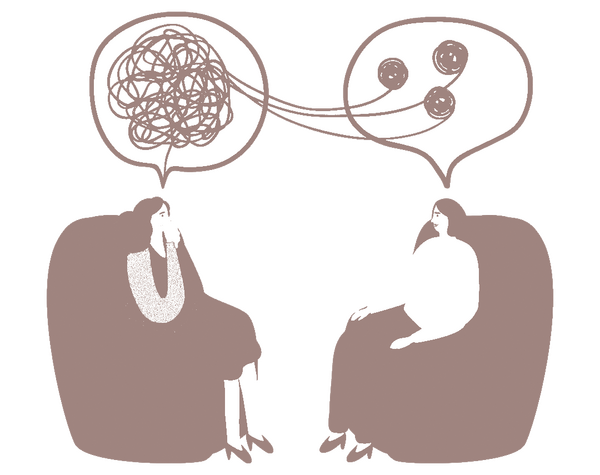
The ghettoization of psychoanalytic approaches in favor of more structured ones, in my program and in the field more broadly, is such that the term itself has gone out of fashion, and most psychoanalytically influenced practitioners instead call themselves “psychodynamic,” indicating that they follow in the tradition in some way, without the extreme orthodoxy implied by the psychoanalytic frame. (I remember realizing that an anxiety about being identified with orthodoxy for fear of marginalization is also a hallmark of US Jewish historical experience, but such observations had no place in my courses.)
In our program, psychodynamic and cognitive behavioral approaches were siloed into two tracks. Everyone had to take two classes in the opposing track, but after that we were encouraged to adhere to one or the other sub-discipline. The first required psychodynamic class I took was called “Evidenced-Based Psychodynamic Psychotherapy,” which I later learned was sort of a contradiction in terms in the field—the prevailing idea being that psychodynamic approaches have no evidence basis, and that since Freud, anyone practicing in this way has basically been doing some kind of baroque, rarefied quackery. The course was designed to challenge this perception. Our readings were mostly randomized-controlled trials of psychodynamic therapies, comparing their outcomes with those derived from other modalities (CBT for depression, CBT for anxiety, CBT for OCD, et cetera). We presented on these studies, debated the evidence as a group, and repeatedly came to the conclusion that less structured, more open-ended psychodynamic therapies are able to be reliably measured, and can be as efficient and effective as highly scripted, billable-by-insurance, eight-session cognitive-behavioral treatments. Though many of my classmates reported enjoying the course, several people noted how strange it was that we were so focused on defending psychodynamic therapy from condemnation that we barely touched on the fundamentals of what it actually was.
Over the course of that semester, the strange stigma around my chosen discipline came into focus. If our coursework had convinced my classmates and me that psychodynamic therapy was useful, we were also now aware that the field we were entering largely thought otherwise. Most of the psychodynamic training placements where we applied for practicum would not openly name their clinical orientation on their websites, nor would our year-long, full-time internship sites. I learned to reliably discern if a given hospital or clinic was psychodynamic by asking senior students, or more often, by searching for the absence of the phrase “evidence-based” and “CBT” in their literature. Telling a cognitive or behavioral therapist you were interested in “dynamic” would elicit reactions similar to those I had gotten from my extended family when I told them in my mid-twenties that I was trans and had left my job at a consulting firm to work as a barista.
Telling a cognitive or behavioral therapist you were interested in “dynamic” would elicit reactions similar to those I had gotten from my extended family when I told them in my mid-twenties that I was trans and had left my job at a consulting firm to work as a barista.
I began to wonder if there was a connection between the silence around Jewishness in my program—at a Jewish school, with a supermajority of Jewish classmates, studying a discipline invented and heavily practiced by Jews—and the broader stigma around psychoanalytic treatments. Was cognitive behavioral therapy—clearly seen by its advocates in the program and the field at large as more rational and scientific—an attempt to whitewash psychotherapy, to banish its ethnicity, messiness, and mysticism? As a novice in the field, I wanted to understand the history of this political and cultural shift, as well as what could be done about it.
For much of the 20th century, the association with Jewishness was a liability for the discipline of psychoanalysis. Peter Gay (who edited the W.W. Norton Freud Reader that I, and perhaps you, were required to read in college) and other eminent midcentury Freud scholars largely held the line that Freud was disconnected from Judaism. In this version of the history, Freud grew up in a highly assimilated Viennese family, had little exposure to Jewish life, and was famously critical of any and all religiosity. In Civilization and Its Discontents, Freud responds to a friend’s suggestion that the basis of religion is an “oceanic feeling” by remarking that he had never felt such a feeling but that perhaps it was a vestige of an undifferentiated, infantile ego state. His interest in Jewish themes (for example, his extensive writings on Moses) was understood as secular; G-d the patriarch was basically a stand-in for earthly fathers.
In 1958, American psychologist David Bakan diverged from the dominant reading in his influential book Freud and the Jewish Mystical Tradition, a study of the close parallels between psychoanalysis and Kabbalah as modes of inquiry. He noted the importance of dreams and sexuality in both the Zohar, a seminal Kabbalah text, and in Freud’s thinking, and their shared fascination with symbolism as an interpretive tool to reveal that which is obscured. Though cautious about making concrete biographical claims regarding Freud, Bakan noted that the analyst grew up in a culture where Kabbalistic ideas were commonly discussed even as pervasive antisemitism engendered widespread ambivalence around how “out” to be as a Jew. He invoked the Kabbalistic idea of remez, or the practice of hinting at ideas subtly in text, as a basis for theorizing how Freud may have deliberately hid the Jewishness of his thought to enable wider dissemination, while at the same time leaving clues that led discerning readers back to its Jewish roots.
Reviewers at the time treated Bakan’s argument as interesting if outlandish; some were particularly put off by his claim that Freud may have been a devotee of Shabtai Tzvi, a disgraced 17th-century Kabbalist who claimed to be the messiah. In the decades that followed, however, Bakan became an important resource for the increasing number of scholars interested in the ties between Freudian ideas and Jewishness. Building on decades of new biographical material, Yosef Hayim Yerushalmi published Freud’s Moses: Judaism Terminable and Interminable in 1991, citing evidence that Freud was raised in an effectively Orthodox household to a mother who only spoke Yiddish. In Yerushalmi’s telling, Freud was intimately familiar from a young age with Jewish texts; the copy of the Talmud he was ritually gifted by his father Jakob when he turned 35 was inscribed not to Sigmund but to “Shlomo.” Where Bakan speculated on the assimilationist pull of Freud’s time, Yerushalmi presents Freud’s external and internal pressures to assimilate and his various motivations for downplaying or obscuring his feelings about Judaism during his lifetime as historical facts. In particular, Yerushalmi argues, Freud’s hesitance around identifying Jewishly came about not because his family was assimilated but because of his complex relationship with his own observant father.
The closer we move to the present, the bolder these arguments become. In 2015, psychoanalyst Joseph Berke penned a history focusing specifically on Freud’s several meetings with the Rebbe Rashab, the fifth Lubavitcher Rebbe, who apparently wrote to Freud asking for help with his “lowness of spirit.” Berke admiringly cites Bakan and Yerushalmi to argue that Freud consciously held—and deliberately hid—not only a rich cultural knowledge of Judaism but also a deep and reverent fascination with Kabbalah, reading the entirety of psychoanalysis as a vehicle through which Jewish mysticism has “entered and enriched the mainstream of Western culture.”
Both Kabbalah and psychoanalysis center on exploring and restoring that which is broken off in individuals through dialogue with an expert compassionate listener. This sage figure catalyzes a subject’s growth and transformation by witnessing their inner conflict.
This body of literature repeatedly invokes the sharp parallels between Kabbalah and psychoanalytic thought. Both traditions center on exploring and restoring that which is broken off in individuals through dialogue with an expert compassionate listener. This sage figure catalyzes a subject’s growth and transformation by witnessing their inner conflict. Psychoanalytic institutes where peers and mentors study clinical texts are likened to yeshivas; the ten sephirot of the Kabbalistic tree of life are likened to Freud’s various drives and cognitive structures. Nearly all the writing I’ve encountered on these questions, regardless of argument, exemplifies the echo between psychoanalytic and Jewish modes of inquiry. There is pervasive scrutiny of details of Freud’s life and the lives of great rabbis, sometimes interchangeably, treating biographical fragments as rich texts in themselves.
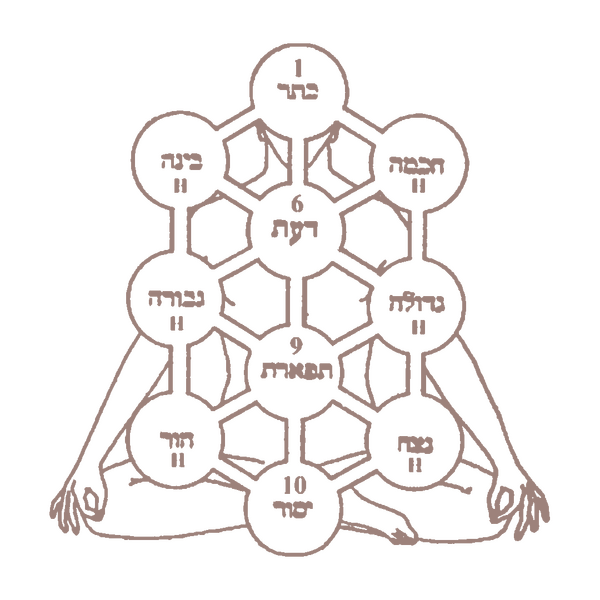
What would it mean for psychodynamic psychotherapists to take seriously the religious roots of their discipline? In 1989, Sanford Drob, a psychologist working out of Bellevue Hospital in New York, explored this question in an essay in The Jewish Quarterly, ostensibly addressing an observant readership. Drob urged religious Jews to take seriously the possibility that the Jewish roots of psychoanalysis show the practice to have spiritual significance. At the same time, he marked a loss in translation between Kabbalah and analytic thought: The former was rooted in an explicit system of values that the latter had left behind. While Drob praised what he understood as the “neutral” stance of the analyst for its conduciveness to insight, he also worried that neutrality—and thereby permissiveness—had little place in the lives of religious Jews dedicated to clear-cut moral precepts and adherence to rabbinic law.
As a cultural Jew myself, rather than an observant one, I am nonetheless preoccupied with Drob’s question about the lack of a values basis in psychoanalytic thought. Perhaps the booming echo between Jewishness and psychoanalytic approaches means that some fundamentals have organically crossed from one body of thought into the other: the textuality—and therein interpretability—of all reality, the importance of meaning-making, the primacy of talking and relating (as well as a fascination with their limits), the importance of intergenerational relationships to pain and healing, the way that childlike ideas of good and bad wrestle with more complex adult ethical frameworks, the tension between individual experience and broader rules (whether religious laws, social norms, or biological drives), the desire for reunification with that which has been broken off and lost due to trauma and the passage of time. Yet it also seems clear that, along with all that was gained in Freud’s work, psychoanalysis became alienated from the specifically communal context of Jewish thought and reshaped to accommodate white, individualist ideas of healing. Something is perhaps lost when one sees oneself as a clinician rather than a spiritual teacher and healer, or as a patient rather than a member of a devotional community.
What survives when pieces of the past are unspoken or deliberately hidden? The manner in which psychodynamic organizations downplay or outright obscure their allegiance to these approaches bears a strong resemblance to the Jewish history of “hiding” so as not to alienate those in power. By the same token, psychoanalysis could finally be outed as Jewish in the past few decades when it had already fallen out of fashion and thus had little prestige left to lose. Still, this revelation is not generally part of the training of psychologists, or even necessarily psychoanalysts. The twinned occlusions of Jewishness and psychoanalysis, both in my own training and in the field at large, are related to larger historical forces and structures of power. The prevalent belief that psychodynamic approaches are inefficient and unscientific is part of a broader effort to rid healing work of uncertainty, openness, and, dare I say, magic. These hidden histories raise the question of whether white supremacist and colonial aspects of clinical work—their tendencies toward individualism and control—could be countered by honoring the occluded religious roots of therapeutic practice.
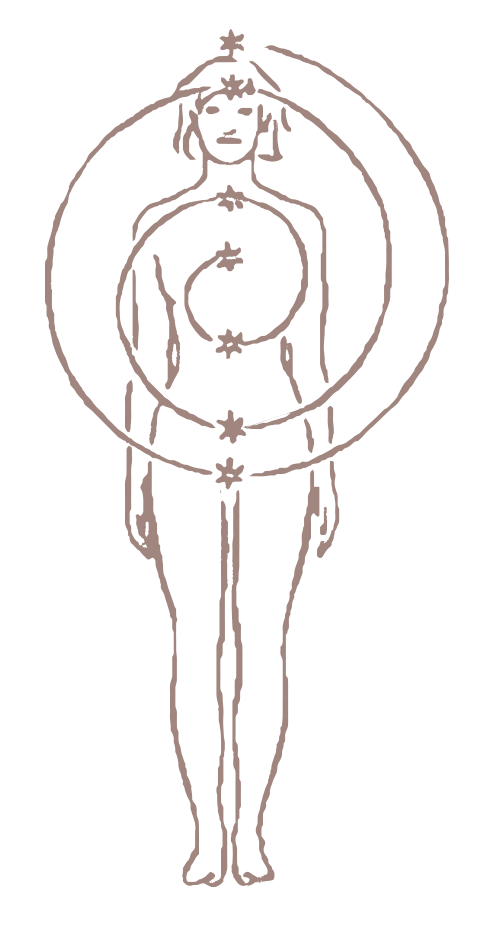
The prevalent belief that psychodynamic approaches are inefficient and unscientific is part of a broader effort to rid healing work of uncertainty, openness, and, dare I say, magic.
There’s a joke that goes, “What’s the difference between a Buddhist and a non-Buddhist?” The answer: “Only the non-Buddhist sees the difference.”
In the 1960s, a white teenager in Oklahoma named Marsha Linehan suffered a mental health crisis for which she was treated at an expensive private inpatient hospital in Connecticut. Later, as an adult, she studied psychology and became immersed in Zen Buddhism. Drawing on both her experience of institutionalization and her spiritual training, Linehan went on to develop Dialectical Behavior Therapy (DBT), an increasingly popular treatment for an array of psychiatric diagnoses. As with CBT, expertise in DBT derives from courses and extensive treatment manuals, rather than from the therapist’s own experience of undergoing the therapy, as in psychoanalysis. But philosophically, DBT is centered on the dialectic between acceptance of one’s current state of being and circumstances and an aspirational desire to change them. Perhaps even more overtly than the way in which psychoanalytic thought draws on Jewish mystical teachings, the essence of DBT plainly derives from Zen.
It is tempting to say that, alienated from its spiritual roots, DBT is corrupted. As I reflect on this idea, I remember that Jeff Bezos swears by 20 minutes of mindfulness meditation at the start and end of each day. And perhaps it goes without saying that Linehan’s Buddhist-derived teachings in the form of DBT, like many white Buddhist practices, have been copyrighted and monetized, recast as intellectual property. Still, Thich Nhat Hanh, who along with Linehan helped popularize mindfulness practices in the US, believed in the potential of even attenuated forms of spiritual practice. He wrote that every time Buddhism enters a new country, it takes a new shape. After coming of age in Vietnam, he arrived in the US in 1960 to teach mindfulness and nonviolence as a deliberate strategy, to encourage the uptake of certain spiritual ideas in the very country that was waging endless war against his homeland. If such spiritual practices are assimilated into dominant cultures, he argued, those cultures themselves will shift.
Do spiritual ideas that get absorbed into mainstream clinical practices still retain their potency? Or do they become declawed in the process? The reuptake of Buddhist ideas into clinical spaces is not always clean. As with Judaism and psychoanalysis, DBT translated the spiritual authority of Zen monks into the secular authority of psychologists, psychiatrists, social workers, and mental health counselors. Working in a psychiatric inpatient hospital last year, I was supposed to lead a group on an idea from Linehan’s DBT called “emotional regulation” for incarcerated and heavily medicated inpatients with varying levels of psychosis. My task—teaching groups of patients alternatives to becoming upset while stuck in a punitive setting—left me feeling like an unmistakable agent of state repression. Some portion of my peers at my graduate school of Holocaust survivors’ grandchildren who don’t talk about the Holocaust will take on such positions more permanently, becoming psychologists in prisons, forensic psychiatric hospitals, and other kinds of psych wards where people are kept against their will, sedated, restrained, isolated, silenced.
My friends participate in ayahuasca and toad venom ceremonies or get astrological readings instead of going to therapy, start acupuncture or receive doses of herbal
tinctures instead of taking antidepressants.
Obviously, spirituality is not free from the contamination of power; institutional religious leaders are perhaps less popular than ever given the litany of transgressions they commit across an array of belief systems and denominations. Still, the move toward broadly spiritual, Eastern, and occult practices—and away from clinical psychotherapy—is an unmistakable backlash against the hegemonic white secular authority of ordinary mental healthcare. My friends participate in ayahuasca and toad venom ceremonies or get astrological readings instead of going to therapy, start acupuncture or receive doses of herbal tinctures instead of taking antidepressants. This is not merely a generational trend or even the result of inadequate financial coverage for care; it’s also a response to the way mainstream Western clinicians and clinical training practices have over and over again betrayed marginalized people and sided with power.
The question then becomes how to reverse assimilate these practices, how to decode the remez, how to uncover and reground in therapy’s origins. The Jewish ideas that precipitated psychoanalysis were developed, shared, and preserved by communities. Zen Buddhism is similarly stewarded by collective religious orders. Any return to spirituality in therapeutic practice would likely consider individualism as a kind of malady. In his writing on the Heart Sutra—a fundamental text on emptiness and wisdom that serves as the foundation of many branches of Buddhism—Thich Nhat Hanh explains the idea of interbeing. Declaring all things empty, he teaches, does not mean that there is no meaning in anything, but rather that phenomena we encounter in the world are empty of something, and that the thing of which they are empty is a separate self. This quality of lacking separate selves, or “interbeing,” is visible in everyday occurrences like a cloud becoming rain or, more complexly, a parent’s characteristics appearing in their child. It is not that you exactly are your parents or ancestors, but that they persist through time in part through you, or, as he would put it, you “inter-are.”
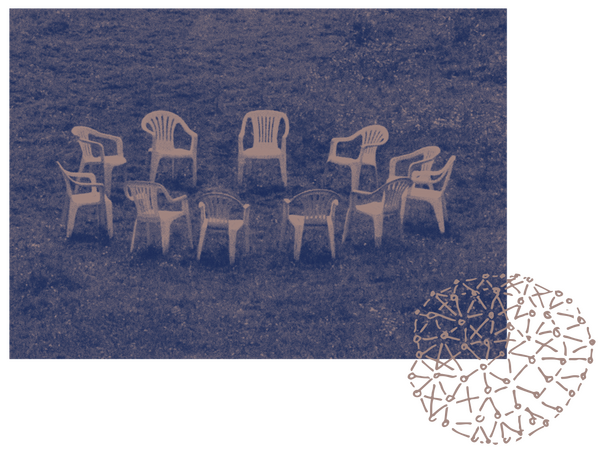
Aspects of a collective or interdependent tradition remain visible even within therapeutic practice today and especially within psychoanalysis: Analysts undergo career-long supervision and are prone to tracing lineages of who studied with whom, mapping genealogies of inherited wisdom. In order to preserve the spark of rabbinic wisdom in psychoanalytic doctrine, I try to remember that historically rabbis served entire communities of people, not isolated individuals, and that they believed their communities worked in service of repairing the brokenness of the world. In order to enact the Buddhist wisdom from which DBT derives, I think about the principles of pacifism and nondualism that were part of my introduction to Zen. I try to remind myself—as a therapist and as a Jew—that assimilation into whiteness is not merely an aesthetic or superficial masking, but rather a spiritual capitulation to power, a decision to turn our most sacred practices over to prisons, profiteers, and bureaucrats.
Claiming spiritual authority would ask different things of the clinical psychotherapist. It would seem absurd to ask monks or rabbis to instruct others without having ever meditated or prayed, and yet, I’ve never once been asked to develop my own meditation practice before leading mindfulness exercises for patients. True collectivism may also upend today’s clinical norms; deep embeddedness within community is tricky in neoliberal frameworks of individualism, privacy, and fees for service. In the face of social crisis, spiritual leaders and their congregations often come together, making political use of their collective positionality; therapists—especially when trained to be neutral—sometimes struggle to articulate the place of their political convictions in their work, let alone their solidarities with one another in a shared goal of collective healing. Without more deeply engaging the sacredness of our work, psychotherapists risk becoming obsolete in the task of repairing the social and psychic wounds we are allegedly supposed to remedy.
It would seem absurd to ask monks or rabbis to instruct others without having ever meditated or prayed, and yet, I’ve never once been asked to develop my own meditation practice before leading mindfulness exercises for patients.
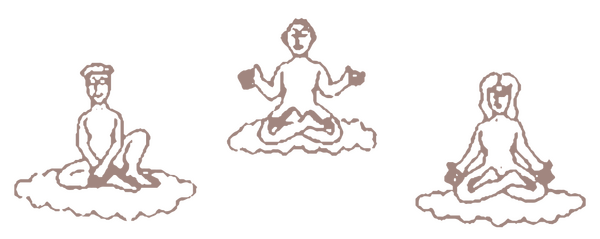
A reevaluation of how we see mental illness is also necessary. Healing, as defined in typical clinical frameworks, often looks like productivity and compliance. Alternative definitions of thriving that emphasized spiritual rather than clinical modes would instead involve reducing alienation, increasing historical and political consciousness, and helping patients connect with sources of meaning that transcend shallow consumerist markers. This might include asking patients to consider questions about ancestry, the meanings of one’s life, and of course, community. It would likely include somatic therapies—largely siloed from psychology and psychiatry because of academic rigidity and the hegemony of the white, conservative American Psychiatric Association and its Diagnostic and Statistical Manual—that help repair the toll that oppression takes on peoples’ bodies and nervous systems. And, as many radical therapists started to argue in the ’60s and ’70s, it would likely involve significant time in groups, learning from shared exchange and collaboration. Freud allegedly believed that if we all received analysis, eventually one’s friends would be able to take on the role of the analyst and we could analyze each other, much in the way observant Jews studying together in yeshiva could understand and lay claim to ancestral teachings as a community.
Hidden histories are strange. Buried roots still provide nourishment; traces of pre-capitalist, counter-hegemonic currents are alive in psychotherapy today. Uncovering the origins of our therapeutic modalities and exploring how they relate to our own practices is a critical task for clinicians, and one that cannot wholly be separated from the task of authentically healing our patients. Allowing these spiritual foundations to remain shrouded and even erased by white capitalist revisions is a kind of capitulation; surfacing them is part of resistance. Perhaps even more importantly, we must address how the values basis of our practice in the world today relates to structures of power that maintain the kinds of individual dysfunction our healing modalities supposedly treat. Otherwise, we are like monks preaching nonviolence while burning down neighboring houses, like rabbis preaching to a starving community on the virtues of fasting. Without understanding our history as practitioners—and users—of psychotherapy, and understanding our role in changing the future, we diminish our effectiveness in the interlocking tasks of collective healing and collective struggle
hannah baer is a writer and therapist based in New York. Her writing has appeared in The Guardian, Artforum, and the Los Angeles Review of Books. She is the author of the memoir trans girl suicide museum.
